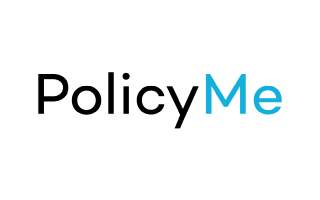PolicyMe Life Insurance

- Plans from $17.16 / month
- Get a free quote
- No medical exam
Permanent life insurance offers lifelong coverage — as long as you keep up your premiums. It’s a life insurance policy and often an investment product rolled into one. It pays out a lump sum to your beneficiaries when you die, and usually has a savings component known as the “cash surrender value” (CSV).
Canada has a unique permanent life insurance option, “term to 100” (sometimes called Term 100 or T100), which does not usually include cash value. Because there is no investment component, the premiums are cheaper than other permanent life policies.
When you pay your monthly or annual premiums, typically a portion will go towards the death benefit and another portion goes to the cash value of your policy. Think of the cash value as a tax-deferred savings account. The amount of money that goes into this account varies by policy, and it earns interest over time.
Once you build up enough cash value, you may have the option to take out loans against your policy, use the funds to pay for premiums, boost the death benefit or save for retirement. Make sure to read through your policy carefully, because some policies require that you use the entire portion of your cash value while you’re alive, or else it won’t get payed out to your beneficiaries along with the death benefit once you die.
All of the following permanent policies last your entire life and most accumulate cash value. But they vary in terms of how the cash value grows:
It’s important to realize that this is just one way to breakdown permanent life insurance options. Some insurance companies may define these policies differently or include any combination of features in the policies they offer. This list should still give you a good starting point to learn the types of permanent policies generally available, and help you decide what options may be right for you.
For the average person, a term life insurance policy makes the most sense. But permanent life insurance might be the best option for those with complex financial needs, such as:
Most permanent policies are a two-in-one product: They offer lifelong coverage and the opportunity to invest. While the forced savings vehicle works well for some people, this type of life insurance is expensive to maintain — and it isn’t always a sound investment.
Whether you’re in the market for a permanent policy or a simpler term life insurance policy, be sure to compare providers and learn more about what life insurance options are available.
Find the best life insurance policy for your family when you compare providers with this innovative online platform.
Protect your family’s quality of life in the event of your death with life insurance products from this reputable provider.
Check out this alphabetical list of Finder’s reviews of Canada’s providers that offer life insurance coverage.
Find out what life insurance policy to get if you’re over 50, and how to get affordable premiums.
Find out your odds of dying based on age and gender. You’ll also learn what kind of high-risk activities affect your chances of dying.
Save money and get easy approval when you apply for life insurance coverage with this reputable online provider.
Get big savings on your premiums when you use this digital platform to compare life insurance quotes.
Check out the life insurance policies and products RBC offers to see if one’s right for you.
Learn about insurance policies and products Manulife offers.
Check out the range of insurance policies and products offered by Sun Life Financial.